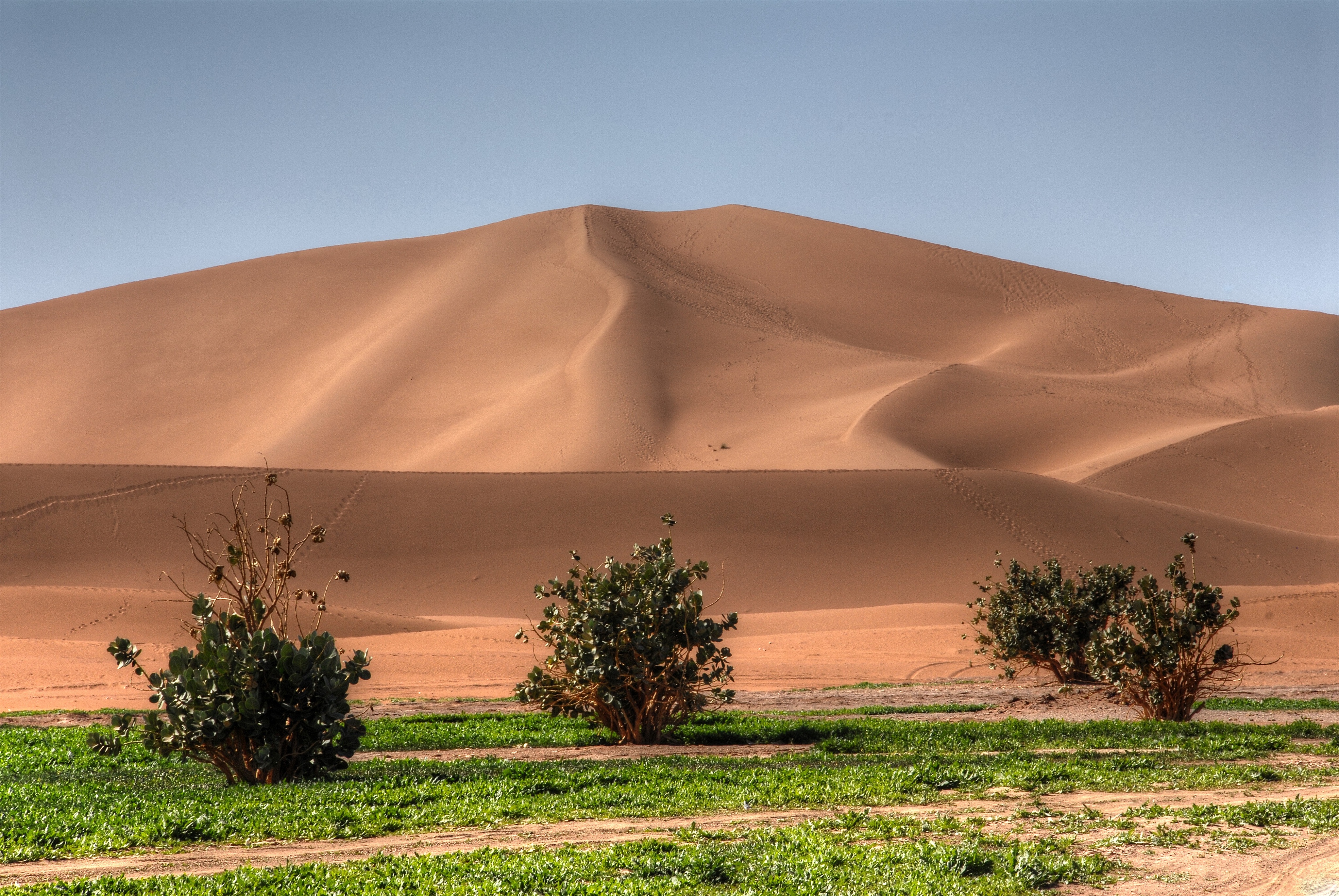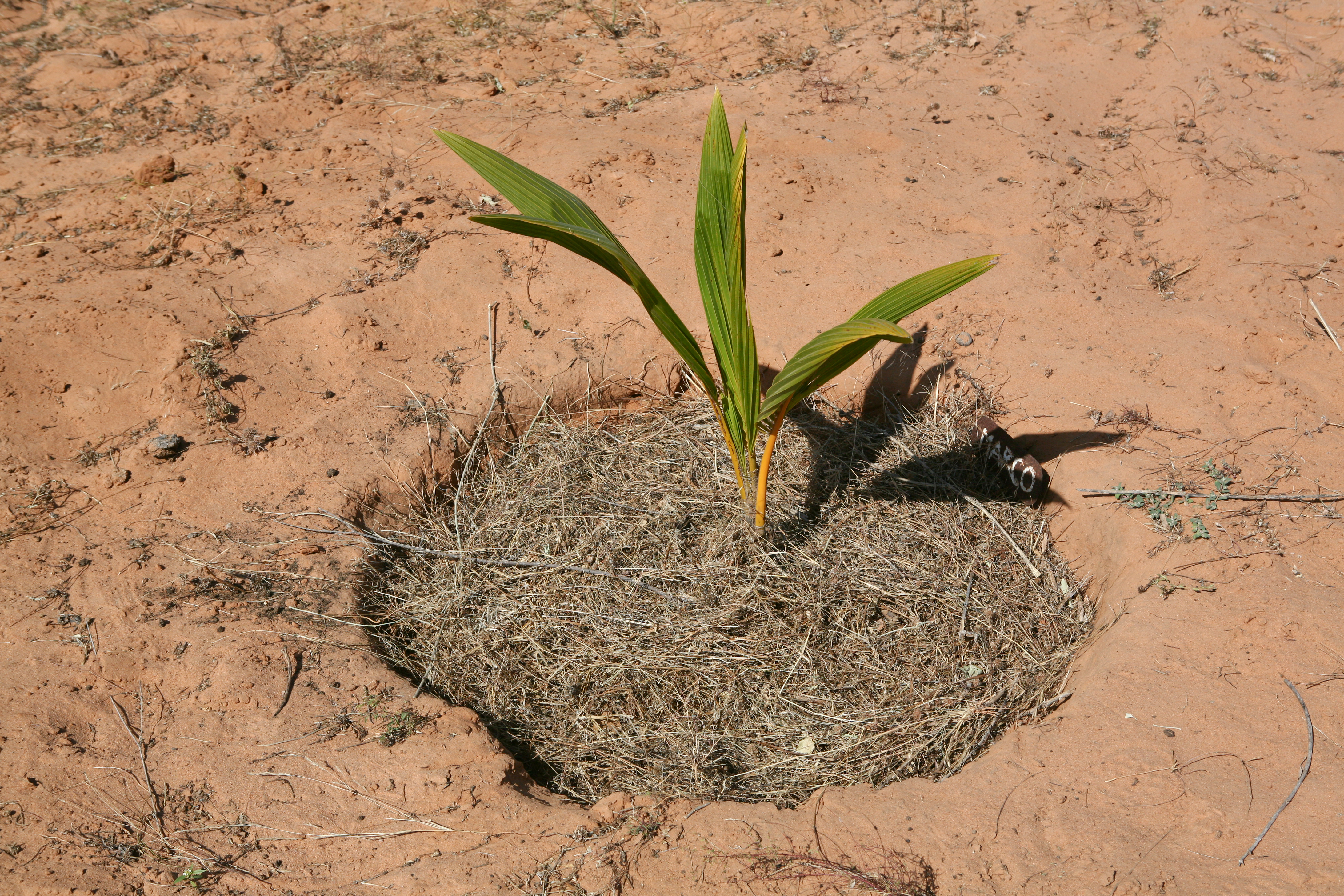The creeping disease that threatens populations

For the past 20 years, more and more countries have been affected by desertification – and not just because of climate change. Experts say that some agricultural practices have also had disastrous effects.
It’s not the desert on the move but farming land that is slowly disappearing, contrary to what most people believe.
“The mental picture we have is one of a sandy desert and dunes swallowing up villages and fields,” Gudrun Schwilch, a researcher at the University of Bern’s Centre for Development and Environment, told swissinfo.ch. “But in most cases, it’s just not like that.”
According to the United Nations Convention to Combat Desertification (UNCCD), desertification is “the degradation of land in arid, semi-arid and dry sub-humid areas. It is caused primarily by human activities and climatic variations”. Altogether, these regions represent 40 per cent of the earth’s land surface.
The latest UN data, published in April, shows that desertification has increased substantially over the past two decades. Today, 168 countries are affected, while only 110 were suffering from the problem in the 1990s; around 850 million people are directly concerned.
Desertification, says Schwilch, is the result of a number of factors, including climate change. “But it’s not a natural phenomenon. Its main causes are related to human activities.”

More
Halting a desert with the ‘Great Green Wall’
Global problem
Deforestation, intensive farming, overuse of pastures and inadequate irrigation practices have led to a degradation of agricultural land. Erosion due to wind and water, as well as extreme climatic events such as droughts only speed up the process, according to experts.
This results in the depletion of the soil’s nutrients and the disappearance of the arable layer of earth. Each year, around 120,000 square kilometres are lost (around three times Switzerland’s surface): land that could be used to grow 20 million tonnes of cereals, reckons the UN.
The most affected zones are regions where intensive farming is the norm and the effects of climate change are the most felt. “It’s happening in emerging economies such as China and India as well as in the least developed nations in Africa and South America,” says Schwilch.
In Africa, two-thirds of the productive surfaces have suffered from some form of desertification. But it would be wrong to believe that only countries with little industrialisation are facing the problem.
The whole of the Mediterranean basin is affected, she says. “The worst-hit is Spain, which has been struggling with the issue since the 1950s.”
Even Switzerland, often called Europe’s water tower, cannot say it is safe. “It wouldn’t be right to call it desertification since it is a humid zone,” Schwilch points out. “But if you’re talking about a general degradation of land surfaces, the whole country is concerned.”
The African Great Green Wall initiative aims to create a swath of vegetation stretching about 7,000 kilometres from Senegal in the west to Djibouti in the east. It would be around 15 kilometres wide, passing through Mauritania, Mali, Burkina Faso, Niger, Nigeria, Chad, Sudan, Ethiopia and Eritrea. Irrigation would be provided by dams and artificial lakes.
The goal is to slow the progression of the Sahara Desert, as well as improve the standard of living of local populations and reduce the number of climate refugees.
The trees planted will also help trap carbon dioxide, a greenhouse gas.
The initiative is backed by the UN and the World Bank, which are providing $1.8 billion in funding.
In Senegal, where the project has made the most progress, 12 million trees have been planted so far.
Similar initiatives have been launched in other parts of the world, including China (since the 1970s), Brazil, Russia, North America, India and Australia.
Consequences
Although it is a local phenomenon, land erosion has global consequences that are not just ecological or climate-related, but also socioeconomic.
Lower food production leads to migratory effects and conflicts. In Mexico alone, up to 900,000 people leave its arid landscape every year to head for the cities or the United States, according to the UN’s Food and Agriculture Organization.
Some experts even go as far as linking desertification and terrorism in the Sahel region of northern Africa. Kouloutan Coulibaly, Mali’s director of forestry, recently told the BBC that poverty related to extreme heat, drought and a lack of food makes the Sahel a breeding ground for extremism.
“When you have no money and no job and the terrorists come and pay, people say yes,” he told the British broadcaster. “It’s an opportunity for them.”
Radical proposal
It’s the economy as a whole that suffers from the consequences of desertification. In a recent UNCCD background report, the convention’s experts estimated that the direct cost of the phenomenon was equivalent to three to five per cent of the global agricultural gross domestic product, or $64 billion (CHF59 billion) a year.
That share varies hugely from country to country, from 6.6 per cent in Paraguay to nine per cent in Burkina Faso and 24 per cent in Guatemala.
To turn the ship around and create new arable surfaces, Swiss engineer Jean-Edouard Buchter has a radical proposal. In his 2012 book, Reverdir le Sahara (re-greening the Sahara), he suggests irrigating the desert with water recovered at the mouths of major rivers and transported by pipelines or tankers.
Projects that can be realised in the shorter term including planting trees in affected zones.
Although Schwilch warns that simply planting won’t be any use. “We saw in Spain that non-indigenous species were planted – and in the wrong places. But if you involve the local population and you include proper sustainable land and water management, you might achieve something.”
Mobile applications
She says any action should take place where land is still productive rather than in zones suffering from desertification. “People need to see the benefits of an intervention. New technologies could be of great help there.”
Schwilch is thinking in particular about mobile applications. “We’re working with an American institute on developing such a tool. The idea is to give people easier access to solutions that will work long term,” she says.
The idea is that once a field’s parameters, such as rainfall or soil type, are entered into the application, it will draw up solutions for sustainable management.
Local formulas which don’t rule out global solutions, she adds. “What’s important is the exchange of knowledge and sharing as widely as possible local experiences.”
In 1994, the United Nations General Assembly declared June 17 the World Day to Combat Desertification and Drought.
The theme this year is drought and water scarcity, in particular “the drylands and beyond, calling attention to the importance of sustaining healthy soils as part of post Rio+20 agenda, as well as the post-2015 sustainable development agenda”.
Established in 1994, UNCCD is the sole legally binding international agreement linking environment and development to sustainable land management. The convention addresses specifically the arid, semi-arid and dry sub-humid areas, known as the drylands.
In the 10-Year Strategy of the UNCCD (2008-2018) that was adopted in 2007, parties to the convention specified that they would “forge a global partnership to reverse and prevent desertification/land degradation and to mitigate the effects of drought in affected areas in order to support poverty reduction and environmental sustainability”.
Switzerland is a party to the convention and donates around CHF50 million a year to combat desertification. The Swiss Agency for Development and Cooperation (SDC) manages 70 related projects, focusing mainly on problems in drought-affected areas.
(Sources: UNCCD, SDC)
(Adapted from French by Scott Capper)

In compliance with the JTI standards
More: SWI swissinfo.ch certified by the Journalism Trust Initiative

You can find an overview of ongoing debates with our journalists here. Please join us!
If you want to start a conversation about a topic raised in this article or want to report factual errors, email us at english@swissinfo.ch.